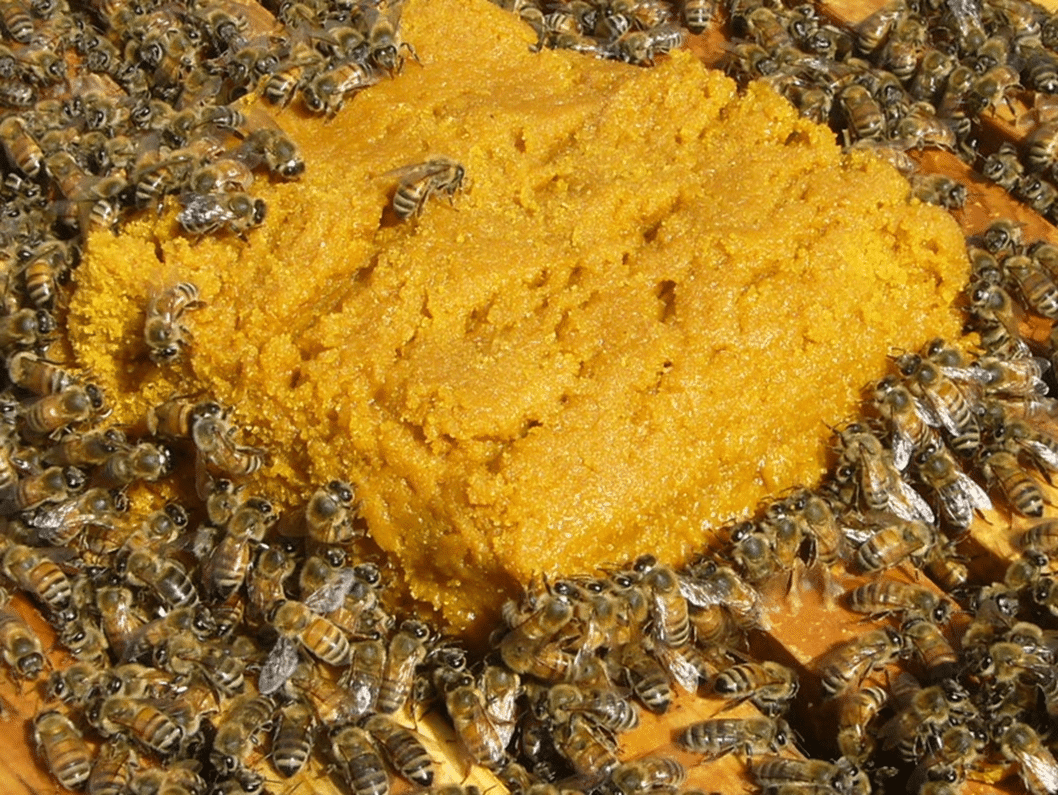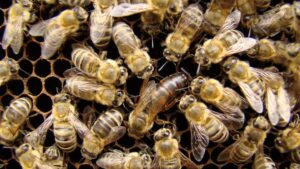Winter always brings uncertainties in the agricultural community, but for beekeepers, the cold temperatures can be especially unsettling. Unlike farmers and ranchers, beekeepers can’t simply go out to the fields or barn and check on things during particularly difficult conditions. Neither can they provide food or other nourishment if they notice supplies in the hive running low.
“You can’t just open the hives and look inside to make sure everything is okay,” says Dr. Kirsten Traynor, a post-doctoral entomology research associate at University of Maryland’s College of Agriculture and Natural Resources.
All preparations and checks need to be completed before temperatures drop to frost levels, which trigger the bees to go into their clustering mode. This cycle allows them to conserve energy and maintain warm-enough temperatures inside the hive to survive extremely harsh weather.
Randy Oliver, commercial beekeeper based in California, says nutrition needs to be monitored closely as the fall season approaches, as supplemental feeding needs to be done early enough to enable the brooding of “winter bees.” It needs to be warm enough for the bees to rear brood and convert any sugar syrup into honey stores for winter.
“Colonies need good nutrition in September in order to rear the round of brood that will emerge into the winter bees that will survive until spring,” Oliver says.
Depending on location, the fall and winter seasons look different.
“In warmer climes, such as in the southern states and California in preparation for almond pollination, colonies can be inspected and cared for throughout the winter,” Oliver says.
If there are plants in flower as a pollen source, bees might not go into cluster at all. However, that is only in the most southern states.
“Since flowering plants and insect pollinators coevolved, few bee-attractive plants flower unless daytime temps are above 55 degrees F, which is also the temperature that honey bees typically start flying,” Oliver says.
So, as fall temperatures drop towards that mark for most of the country, and flower blooms disappear, beekeepers start looking to see if food storages are ample. If not, this is when supplemental action is taken.
“In areas without fall bloom, such as from goldenrod, beekeepers may feed ‘pollen supplement’ vegetable protein patties to get their colonies into good shape,” Oliver says.
Despite these preparations, Oliver says most population loss occurs in late fall, as those bees that were foragers during summer and fall fly off to die.
“The workers that emerge after the first frost, after which there is no incoming pollen, shift physiologically into long-lived winter bees that suffer very little winter mortality unless there are diseases or they starve from lack of honey,” Oliver says.
Normal losses for a hive population fall in the 10 percent range, according to Traynor.
“It’s normal for a healthy hive to go into the winter with around 35,000 to 50,000 bees, and they may see a dip of 10-20%, but brood rearing begins again in the middle of the winter season and the hive is usually able to recover those losses if healthy,” Traynor says.
Of course, that all depends on the health of the hive, which largely depends on the varroa mite population.
Mites
While it’s important to get mite populations under control before winter sets in, Traynor explains that in some instances, winter can be helpful for managing mite populations.
There are specific varroa mite control products that can be applied while the colony is broodless and they can be even more effective because the mites cannot hide under the brood cappings in this season.
“As much as 70-80% of mites are in the brood nest, so when the colony is not brooding, you can use different miticides,” Traynor says. “So, even though it’s challenging, winter can actually be a good time to clean up the hive and have it come out very strong in the spring.”
However, Oliver says that method is not enough on its own. Mites must be combatted all year to ensure healthy hives.
“One of the biggest problems is that beekeepers may wait until too late in the season to control varroa. It needs to be controlled prior to the bees rearing the last rounds of brood in fall, or those bees, which are destined to become the long-lived ‘winter bees’ will be weakened by mite-transmitted viruses,” Oliver says.
In addition to mites, beekeepers have other concerns in the winter as well, too.
“The other winter disease is due to the microscopic gut parasite nosema, which is generally only a serious problem in areas with extended winter dormancy,” Oliver says.
Inside the hive
While beekeepers can’t open the hive to check on colonies, they can use infrared cameras to see the size of the clustering bees, which can give them an indication of how well the bees are managing to stay warm.
It’s difficult to monitor population losses during the winter.
“In general, for beekeepers with almond contracts, pollination begins in mid-February, so they aren’t sure of their loss rate until mid-January. Most other beekeepers don’t inspect until early spring,” Oliver says.
Waiting can be nerve-racking to new beekeepers, but veterans use the time to prepare for spring and simply must trust the process.
Oliver says colonies winter optimally at around 42 degrees F.
“So long as they are healthy and the hive is full of good honey, colonies can survive temperatures well below freezing. They can survive Canadian and Vermont winters,” he says.
Traynor says colonies can even survive in Alaska if the proper preparations are taken.
“The colony forms a tight cluster to conserve heat, keeping the outer shell of bees at around 50-55 degrees F,” Oliver says.
Traynor describes the outer part of the cluster as a dense outer mantle that surrounds a looser inner core of bees.
“That outer core functions a bit like feathers, to keep the heat from escaping,” she says.
This adaptation is specifically unique to honeybees. With 4000 species of bees, honeybees are the only ones that survive the winter as a whole unit.
“Bumble bees, for example, are also a social unit, but only the reproductive bees survive the winter. Honeybees are unique in that they have adapted to survive in this way,” Traynor says.
The bigger the colony, the more likely they are to survive.
“The more bees in the cluster, the better they can maintain the heat. In a small cluster, the outside bees can succumb to cold and fall off, which means the cluster just continues to shrink,” Traynor says.
“About three inches outside the cluster, it’s cold, even in the hive, so having a large population is key,” she says.
If a hive is small, many beekeepers will attempt to combine in with another colony to give it a better chance of survival. If the hive is unhealthy, however, it could be sacrificed.
Alternative options
It’s also important to note that backyard and commercial beekeeping operations are very different, and even commercial operations vary widely in how winter preparations are handled. Many beekeepers move their colonies south for the winter, through transporting colonies can be tricky and cause stress on a hive.
Others move the hives into temperature controlled environments.
These shelters are usually potato sheds in Idaho that are temperature controlled with air-circulation fans as well, Traynor says.
These sheds are often used to help bees maintain their hibernation-like state until time to move to California in January or February for the almond pollination season.
There are problems with this practice, too, however, including diseases that can more easily spread through a colony without the opportunity for cleansing flights. Or a breakdown in the temperature control or air circulation is also always a possibility.
Ready for spring
No matter the method for helping bees survive harsh winter conditions, the springtime warmup is a season of new beginning. Not only do bees come out of cluster mode and begin pollination again, but brood rearing also begins, which means the winter bees die off and are replaced by summer bees, which have a shorter lifespan.
“The trigger for initiation of serious broodrearing in spring is the early tree pollens,” Oliver says.
“Beekeepers preparing hives for almond pollination may feed protein at that time of year if the weather isn’t favorable for foraging.”
And while the bees’ focus may have shifted from winter to summer, the cold season is always in the back of a beekeeper’s mind.
They must ensure bees have adequate nutrition and healthy hives during the summer months.
“We’re always thinking about nutrition and food stores to ensure our hives our healthy,” Traynor says.











